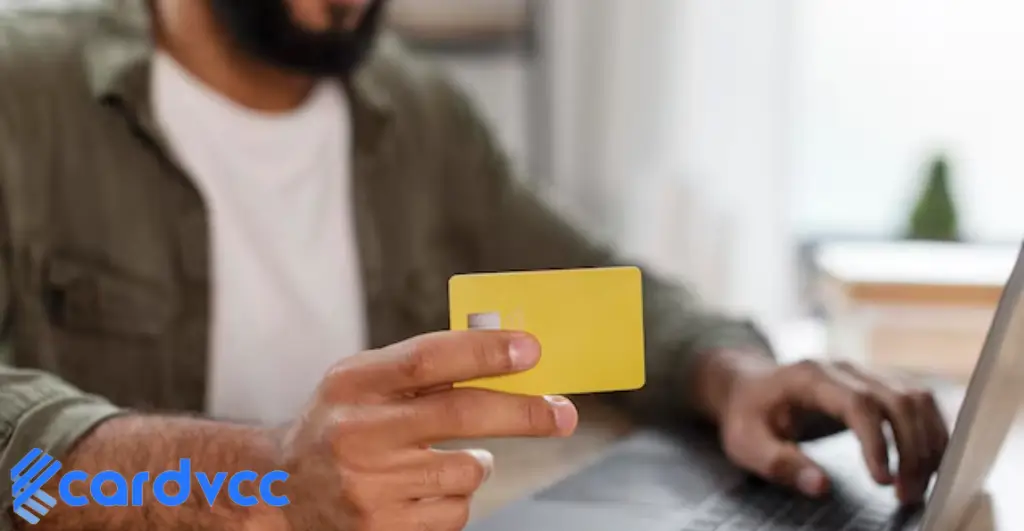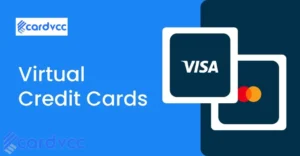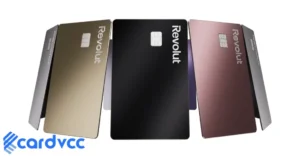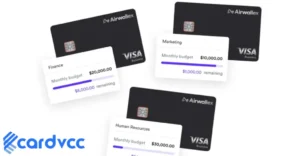A virtual card is a digital version of a physical card used for online transactions. A wallet is a digital app that stores payment methods, including virtual cards.

Digital payment methods have evolved rapidly, making transactions quicker and more secure. Virtual cards are designed for online purchases and provide a layer of security by masking your actual card details. Digital wallets, on the other hand, serve as comprehensive tools for managing multiple payment methods, including virtual cards, credit cards, and bank accounts.
They offer convenience by storing payment information in one place, accessible via smartphones or other devices. As the digital economy grows, understanding these tools can help you make informed choices about secure and efficient payment options.
Virtual Card Basics
Virtual cards are becoming popular for online shopping. They offer safety and convenience. Let’s explore what makes virtual cards unique.
Definition
A virtual card is a digital version of a physical card. It has a unique card number, expiration date, and CVV. You can use it for online purchases just like a physical card.
Key Features
- Security: Virtual cards provide extra security. They reduce the risk of fraud.
- Convenience: You can generate a virtual card instantly. No need to wait for a physical card.
- Custom Limits: Set spending limits for each virtual card. This helps in budgeting.
- Temporary Use: Some virtual cards can be used for one-time transactions. This adds another layer of security.
- Easy Management: Manage all virtual cards from a single app. This makes tracking expenses easier.
Wallet Basics
Understanding the basics of a digital wallet is essential. A digital wallet is a virtual place to store money. It can be used on smartphones or computers. Knowing its features helps in using it effectively.
Definition
A digital wallet is a software-based system. It securely stores users’ payment information and passwords. It allows users to make electronic transactions easily. Digital wallets can be used for online purchases or in physical stores.
Key Features
- Security: Digital wallets use encryption and tokenization. This keeps your payment information safe.
- Convenience: You can make payments with a tap or a click. No need to carry physical cash or cards.
- Compatibility: Works with various devices and platforms. This includes smartphones, tablets, and computers.
- Multi-usage: Store multiple cards, loyalty points, and other credentials. Easily access all in one place.
| Feature | Description |
|---|---|
| Security | Uses encryption to protect data |
| Convenience | Allows quick and easy payments |
| Compatibility | Works on many devices |
| Multi-usage | Stores various payment methods |
Digital wallets offer numerous benefits. They make transactions faster and more secure. They simplify managing multiple payment methods. Understanding these features helps in making the best use of digital wallets.
Functionality Comparison
Understanding the differences between a Virtual Card and a Wallet can help users make informed decisions. In this section, we compare their functionalities under specific aspects.
Usage
Virtual Cards are typically used for online purchases. They offer a layer of security by keeping your real card details hidden. Users can set spending limits and expiration dates for these cards.
Wallets, on the other hand, are more versatile. They can be used for online and in-store purchases. Wallets can store multiple cards, coupons, and even loyalty points.
| Feature | Virtual Card | Wallet |
|---|---|---|
| Usage | Online purchases | Online and in-store purchases |
| Security | High, hides real card details | Moderate to high, depending on the platform |
| Multiple Cards | No | Yes |
Accessibility
Virtual Cards are usually accessible via a mobile banking app or a website. They require an active internet connection for usage. Virtual Cards are suitable for those who shop online frequently.
Wallets are accessible through dedicated apps like Google Pay, Apple Pay, or Samsung Pay. They can be used offline for in-store purchases. Wallets offer a more comprehensive solution for managing various payment methods.
- Virtual Cards: Accessible via banking apps or websites
- Wallets: Accessible via dedicated apps, usable offline
Security Features
Security features are vital in the digital age. They protect your money and information. Virtual cards and wallets offer various security measures. Knowing these features can help you choose the best option for you.
Virtual Card Security
Virtual cards offer strong security features. These cards are not physical. They are digital and exist only online. This makes them hard to steal or lose. Each virtual card has a unique number. This number is different from your main card number.
Virtual cards also have limited usage. You can set spending limits. You can also set expiration dates. This reduces the risk of fraud. If the virtual card number is stolen, the thief cannot use your main card.
Virtual cards also use encryption. This keeps your information safe during transactions. Any data sent is scrambled. Only authorized parties can read it.
Wallet Security
Wallets also have strong security features. They store your cards and money digitally. Wallets use encryption to protect your data. This ensures your information is safe.
Most wallets require authentication. This can be a password, PIN, or biometric data. Biometric data includes fingerprints or facial recognition. This adds an extra layer of security.
Wallets also have tokenization. This means your card number is replaced with a token. The token is useless to thieves. They cannot use it to access your funds.
Some wallets offer real-time alerts. You get notified of any transactions. This helps you spot unauthorized use quickly.
| Feature | Virtual Card | Wallet |
|---|---|---|
| Encryption | Yes | Yes |
| Unique Number | Yes | No |
| Limited Usage | Yes | No |
| Authentication | No | Yes |
| Tokenization | No | Yes |
| Real-Time Alerts | Varies | Yes |

Benefits Of Virtual Cards
Virtual cards offer multiple advantages over traditional payment methods. They provide a secure and convenient way to manage your finances. In this section, we will explore the key benefits of virtual cards.
Convenience
Virtual cards are easy to use. You can create a virtual card online within minutes. There’s no need to visit a bank. You can use it for online shopping and subscriptions. It is perfect for those who shop frequently.
They can be used instantly after creation. You don’t have to wait for a physical card to arrive. This saves time and effort. Virtual cards can also be easily replaced. If lost, you can generate a new one quickly. This ensures continuous access to your funds.
Privacy
Virtual cards offer enhanced privacy. They do not reveal your actual bank account details. This reduces the risk of fraud. Each virtual card can be used for a specific transaction. Once used, it can be discarded.
This makes it difficult for hackers to steal your information. You can also set spending limits on virtual cards. This helps control your budget. Virtual cards provide a layer of security that physical cards cannot match.
| Feature | Virtual Card | Physical Card |
|---|---|---|
| Instant Use | Yes | No |
| Privacy | High | Low |
| Convenience | High | Medium |
- Convenience: Create and use instantly.
- Privacy: Protects your bank details.
- Security: Easily replaceable if compromised.
Benefits Of Wallets
Wallets offer many advantages over traditional payment methods. They are convenient and secure. Wallets can store multiple cards and payment options. They make transactions fast and easy.
Multiple Payment Options
Wallets can hold various payment methods. This includes credit cards, debit cards, and even loyalty cards. You don’t need to carry all your physical cards. Just store them in your wallet app.
| Payment Method | Supported in Wallets |
|---|---|
| Credit Card | Yes |
| Debit Card | Yes |
| Loyalty Card | Yes |
| Gift Card | Yes |
Ease Of Use
Wallets are user-friendly. You can make payments with a few taps. Wallets often come with biometric security. This includes fingerprint or face recognition. This makes them secure and easy to use.
- Fast transactions
- Easy to manage
- Secure with biometrics
Wallets are a great tool for modern transactions. They make life simpler and safer.
Popular Providers
Understanding the difference between a virtual card and a wallet is key. Both tools have popular providers offering unique features. Let’s explore some of the leading providers for each category.
Virtual Card Providers
Virtual cards offer secure online transactions. They are popular for their ease of use and enhanced security. Here are some top providers:
- Revolut: Known for its quick setup and user-friendly interface.
- Privacy.com: Offers enhanced security and privacy features.
- Netspend: Provides a virtual prepaid card with no credit check.
Wallet Providers
Digital wallets store multiple payment methods in one place. They offer convenience for both online and in-store purchases. Here are some leading digital wallet providers:
- PayPal: A widely accepted and trusted digital wallet.
- Apple Pay: Integrated with Apple devices for seamless transactions.
- Google Wallet: Easily connects with Google services and Android devices.
Choosing The Right Option
Choosing between a virtual card and a digital wallet can be confusing. Each has its benefits and uses. Let’s explore how to make the best choice for your needs.
Personal Needs
Understanding your personal needs is crucial. A virtual card might be better for one-time purchases. It’s also great for added security. If you prioritize convenience, a digital wallet may be ideal. It stores multiple cards in one place.
Consider your spending habits. Do you shop online often? A virtual card can offer more security. Do you use your phone for payments? A digital wallet can simplify your transactions. Think about what fits your daily routine.
Use Cases
Different situations call for different tools. Here’s a comparison table to help you decide:
| Use Case | Virtual Card | Digital Wallet |
|---|---|---|
| Online Shopping | Highly Secure | Convenient |
| In-Store Payments | Less Practical | Very Practical |
| Subscription Services | Easy to Manage | Convenient |
| Travel Expenses | Secure | Easy to Use |
Virtual cards are perfect for online shopping and subscription services. They add an extra layer of security. Digital wallets excel in in-store payments and travel expenses. They make transactions quick and easy.
Think about your main use cases. This will help you choose the right option. Match the tool to your specific needs for the best experience.

Frequently Asked Questions What is the difference between a virtual card and a wallet?
What Is A Virtual Card?
A virtual card is a digital version of a physical card. It can be used for online transactions. It provides an extra layer of security.
How Does A Virtual Wallet Work?
A virtual wallet stores your payment information digitally. It allows you to make payments through your smartphone. It’s convenient and secure.
Can Virtual Cards Be Used In Physical Stores?
Some virtual cards can be used in physical stores. They often require a mobile payment app. It depends on the card issuer.
Are Virtual Cards Safer Than Physical Cards?
Yes, virtual cards are generally safer. They use temporary numbers for transactions. This reduces the risk of fraud.
Conclusion
Understanding the difference between a virtual card and a wallet is crucial for secure online transactions. Virtual cards offer enhanced privacy, while digital wallets provide convenience. Both have unique advantages. Choose the one that best fits your needs. Stay informed and make smart financial decisions to protect your money.







